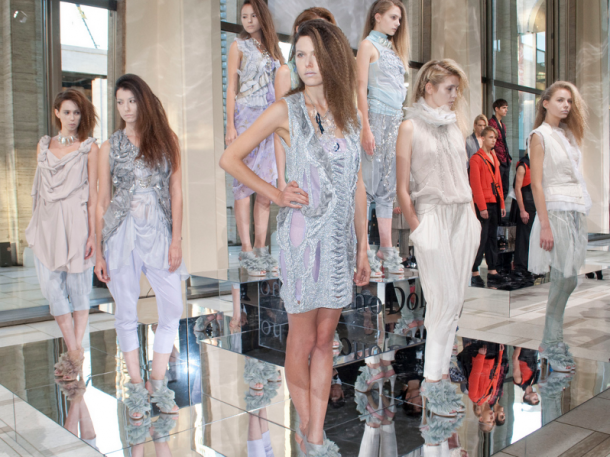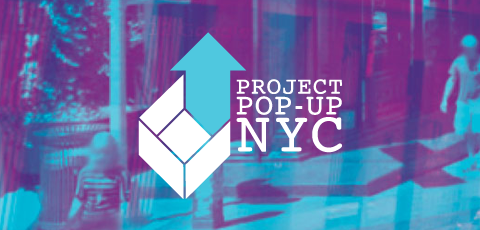
With Mercedes Benz Fashion week coming up, eyes around the world are on New York. A number of the best international designers call the city home as New York offers creative talent unmatchable opportunities for inspiration and highly trafficked retail space. New York City has long been a fashion capital of the world, and the city is looking to keep it that way.The New York City Economic Development Corporation (NYCEDC), an organization focused on developing and encouraging economic growth across the five boroughs, has identified certain challenges the industry faces with hopes of sustaining the industry’s prominence. With the support of Mayor Michael Bloomberg, the NYCEDC has developed six programs to help maintain – and enhance – New York City’s position as a global leader in fashion. The six initiatives are part of a larger program – Mayor Bloomberg’s FashionNYC2020 initiative – that will help the fashion industry focus on the key challenges presented to emerging designers as well as the issues facing the industry as a whole.
New York City as a Fashion Capital
It is understandable why the NYCEDC seeks to keep the city’s fashion industry sustainable; the city’s economy heavily relies on fashion for stability. The fashion industry employees 173,000 people – accounting for 5.7% of the city’s workforce -, nearly $10 billion in total wages, and tax revenue of $1.7 billion. The total revenue of the industry including manufacturing, retail, and wholesale is more than $55 billion.These numbers aren’t surprising when you consider the caliber of fashion that is present in New York. New York is the home to multiple flagship department stores – Macy’s, Bloomingdale’s, Gilt Group, and Barney’s New York being notable examples. The city also offers some of world’s top designers, such as Diane von Furstenberg and Michael Kors.Few cities can compete with New York City for the crown as the Fashion Capital of the World. New York has consistently been ranked either first or second in the annual study done by the Global Language Monitor over the last decade. Other fashion capitals include Paris, Milan and London – with London taking the top spot in 2012. The NYCEDC hopes the FashionNYC2020 initiatives will give New York the tools needed to retake – and keep – the top spot.
Help for Designers in NYC
Many emerging designers find that even if there are parties interested in their designs, they lack the capital necessary to start their first production run. To address this issue, the NYCEDC established the Fashion Production Fund that enables designers to access capital to finance their projects through grants or low-interest loans. The $5 million fund further helps the city’s economy by requiring the designers to be based in New York City and establish their production locally.Addressing another issue for designers in New York City, Design Entrepreneurs NYC equips emerging creative talent with the knowledge and tools to launch and manage a business. The NYCEDC has teamed with the Fashion Institute of Technology for this free “mini-MBA.” The program is designed as a fashion entrepreneur’s “Boot Camp,” preparing them to open and run their businesses on their own. Topics covered in the program include marketing, operations, and financial management.
Connecting NYC’s Fashion Industry to New Talent
To approach these issues, the NYCEDC has a number of programs.

Project Pop-up helps keep New York City competitive as a retail leader with an annual competition to introduce innovative new retail concepts. The competition covers everything from smartphone apps to innovative uses of retail space.To help the industry attract and retain young talent, there are two programs currently in place. Hosted by Parsons, The Fashion Draft NYC gives top business students the opportunity to interview with some of the leaders in the industry such as the Gilt Group or Macy’s. This gives students the opportunity to earn full-time, management-track positions and fashion giants the chance to recruit top talent before they are taken by the other top industries in the city.The other tool to connect young talent is Fashion Campus NYC. The point of the program is to enhance – and expand – the overall experiences students encounter interning at the city’s fashion houses. The Fashion Campus NYC provides education seminars held by leaders in the industry while also giving these young professionals the chance to network.Lastly, highlighting the young minds that are excelling in fashion management, NYC Fashion Fellows offers year-long fellowship programs providing mentoring, networking and community-building opportunities tied with continuing education and career building workshops.
Maintaining a Competitive Advantage
FashionNYC2020 also builds a community out of an industry that is otherwise very competitive, secretive, and quite intimidating. Through these initiatives leaders across the industry come together to help recognize emerging talent, rather than trying to keep their names undercover so as to not leak any of their designs to potential competitors. An example of community building is the fundraiser held by the alumni of FashionNYC2020, with previous participants offering a surprise sample sale to benefit the communities affected by the storm.It is these kinds of programs that will keep New York City great – both as a community and as an international fashion capital.

